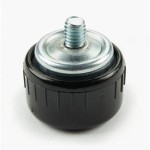How To Paint a Concrete Patio Floor
Painting a concrete patio floor is a relatively straightforward project that can dramatically enhance the aesthetic appeal of an outdoor living space. A fresh coat of paint can revitalize a weathered or discolored patio, creating a more inviting and visually pleasing area for relaxation and entertainment. The process, however, requires careful preparation and execution to ensure a durable and long-lasting finish. This article provides a comprehensive guide to painting a concrete patio floor, covering essential steps from preparing the surface to applying the final coat of sealant.
Surface Preparation: The Cornerstone of a Successful Paint Job
The success of any painting project hinges on proper surface preparation. A clean, sound, and properly primed concrete surface is essential for the paint to adhere correctly and resist peeling, cracking, or blistering. Neglecting this step can lead to premature failure of the paint, resulting in a significant waste of time and resources.
The first step in preparing a concrete patio floor is cleaning. This involves removing any loose debris, dirt, leaves, and other contaminants that may be present on the surface. A stiff-bristled broom is suitable for sweeping away loose materials. For more stubborn dirt and grime, a pressure washer is highly recommended. Using a pressure washer will effectively blast away any embedded dirt and mildew, leaving a clean surface ready for further treatment.
Following the initial cleaning, inspect the concrete for any cracks, chips, or other imperfections. These flaws must be addressed before painting. Small cracks can be filled with a concrete patching compound specifically designed for exterior use. Apply the compound according to the manufacturer's instructions, ensuring that it is properly packed into the crack and smoothed flush with the surrounding surface. Allow thepatching compound to cure completely before proceeding.
For larger cracks or damaged areas, a more substantial repair may be necessary. This could involve using a concrete resurfacing product to create a new, even surface over the existing concrete. Resurfacing is particularly beneficial if the patio floor is severely damaged or uneven. It provides a smooth, uniform base for the paint, contributing to a more professional and durable finish.
After patching and repairing any imperfections, it is crucial to address any existing coatings or sealants. If the patio has been previously painted or sealed, the existing coating must be removed to ensure proper adhesion of the new paint. This can be achieved using various methods, including chemical strippers, mechanical grinding, or sandblasting. The choice of method will depend on the type and thickness of the existing coating. Chemical strippers are effective for removing multiple layers of paint, while mechanical grinding is suitable for removing thinner coatings and creating a slightly rough surface that promotes adhesion.
Once the existing coating has been removed, the concrete surface should be etched to further improve adhesion. Etching involves applying a mild acid solution to the concrete, which opens up the pores of the surface and creates a slightly rough texture. This allows the primer and paint to penetrate the concrete more effectively, resulting in a stronger bond. Follow the manufacturer's instructions carefully when using etching solutions, and always wear appropriate protective gear, including gloves and eye protection. After etching, thoroughly rinse the concrete with clean water to remove any residual acid.
Finally, allow the concrete to dry completely before proceeding to the priming stage. Moisture trapped within the concrete can interfere with the adhesion of the paint and lead to blistering or peeling. The drying time will vary depending on the weather conditions and the porosity of the concrete. Typically, it is recommended to allow the concrete to dry for at least 24 to 48 hours before applying primer.
Selecting the Right Primer and Paint
Choosing the appropriate primer and paint is critical for achieving a durable and aesthetically pleasing finish on a concrete patio floor. The primer serves as a bonding agent between the concrete and the paint, while the paint provides the color and protective layer.
When selecting a primer, opt for a concrete primer specifically designed for exterior use. These primers are formulated to withstand the harsh conditions of outdoor environments, including sunlight, moisture, and temperature fluctuations. Look for a primer that is compatible with the type of paint you plan to use. Acrylic primers are a good general-purpose option that works well with most acrylic and latex paints. Epoxy primers offer superior adhesion and durability, making them suitable for high-traffic areas or patios exposed to harsh weather.
The choice of paint is equally important. Concrete paints are available in a variety of formulations, including acrylic, epoxy, and latex. Acrylic paints are a popular choice for patio floors due to their ease of application, durability, and resistance to fading and cracking. Epoxy paints offer exceptional durability and chemical resistance, making them ideal for patios that are exposed to oil, grease, or other harsh substances. Latex paints are another option, but they may not be as durable as acrylic or epoxy paints in outdoor environments.
Consider the desired finish when selecting a paint. Concrete paints are available in a range of finishes, including matte, satin, and semi-gloss. Matte finishes offer a subtle, natural look, while satin finishes provide a slight sheen that is easy to clean. Semi-gloss finishes are the most durable and easiest to clean, making them a good choice for high-traffic areas or patios that are frequently exposed to dirt and grime.
The color of the paint should also be carefully considered. Lighter colors can help to reflect sunlight and keep the patio cooler, while darker colors can absorb heat and make the patio warmer. Consider the overall aesthetic of your outdoor living space and choose a color that complements your existing furniture and landscaping. It's also a good idea to test a small area of the patio with the chosen paint color before applying it to the entire surface to ensure that you are satisfied with the result.
Before applying the primer and paint, thoroughly stir them to ensure that the pigments are evenly distributed. This will help to prevent uneven color or streaking. Follow the manufacturer's instructions regarding application techniques, drying times, and number of coats.
Application Techniques for a Professional Finish
Proper application techniques are essential for achieving a smooth, even, and durable finish on a concrete patio floor. The method of application, the tools used, and the attention to detail all contribute to the overall appearance and longevity of the painted surface.
Before starting the application process, it is crucial to ensure that the concrete surface is completely dry and free of any dust or debris. Even small amounts of moisture or contaminants can interfere with the adhesion of the primer and paint. If necessary, vacuum the patio floor to remove any lingering dust or dirt.
Begin by applying a coat of primer to the entire concrete surface. Use a brush to paint along the edges and corners of the patio, and then use a roller to apply the primer to the remaining areas. Apply the primer in thin, even coats, overlapping each stroke slightly to ensure uniform coverage. Avoid applying too much primer in one area, as this can lead to runs or drips. Allow the primer to dry completely according to the manufacturer's instructions before proceeding to the painting stage.
Once the primer has dried, it is time to apply the first coat of paint. Use the same techniques as with the primer, applying the paint in thin, even coats with a brush and roller. Pay close attention to the edges and corners of the patio, ensuring that they are fully covered. Allow the first coat of paint to dry completely before applying the second coat. The drying time will vary depending on the type of paint and the weather conditions.
Apply a second coat of paint to ensure full coverage and a durable finish. This coat will help to conceal any imperfections and provide a more uniform color. Use the same application techniques as with the first coat, applying the paint in thin, even coats and overlapping each stroke slightly. Allow the second coat of paint to dry completely before proceeding to the final step.
After the final coat of paint has dried, consider applying a clear sealant to protect the painted surface from wear and tear. A sealant will help to resist scratching, fading, and staining, extending the life of the paint. Choose a sealant specifically designed for exterior use and follow the manufacturer's instructions carefully. Apply the sealant in thin, even coats with a brush and roller, and allow it to dry completely before using the patio.
During the application process, it is important to maintain a wet edge to prevent lap marks. A wet edge refers to the area of paint that is still wet and blending smoothly with the previously painted area. Work in small sections and avoid allowing the paint to dry before blending it with the adjacent section. If lap marks do occur, they can be minimized by lightly sanding the affected area and applying another coat of paint.
Clean your brushes and rollers immediately after use to prevent the paint from drying and hardening. Use soap and water for latex paints and mineral spirits for oil-based paints. Store your brushes and rollers in a clean, dry place to prolong their lifespan.
By following these application techniques and paying close attention to detail, you can achieve a professional-looking finish on your concrete patio floor that will enhance the beauty and functionality of your outdoor living space for years to come.

How To Paint A Concrete Porch Or Patio
:max_bytes(150000):strip_icc()/faux-painted-rug2-5d0d2b1a8ddd4c60a39ffd329840874e.jpg?strip=all)
19 Painted Concrete Patio Designs

Before And After Painted Concrete Patio Thistlewood Farm

Diy Painting A Concrete Patio Easy Makeover Youtube

10 Painted Concrete Patio Floor Ideas Jamie Lundstrom

The Solution To Decorating Concrete Patios Porches

Before And After Painted Concrete Patio Thistlewood Farm

How To Paint A Concrete Porch

How To Repaint A Painted Concrete Porch Cuckoo4design
:max_bytes(150000):strip_icc()/cement-tile-1-of-1-683x1024-f5a283b105e04abf8729e7390f9148bc.jpg?strip=all)
19 Painted Concrete Patio Designs








